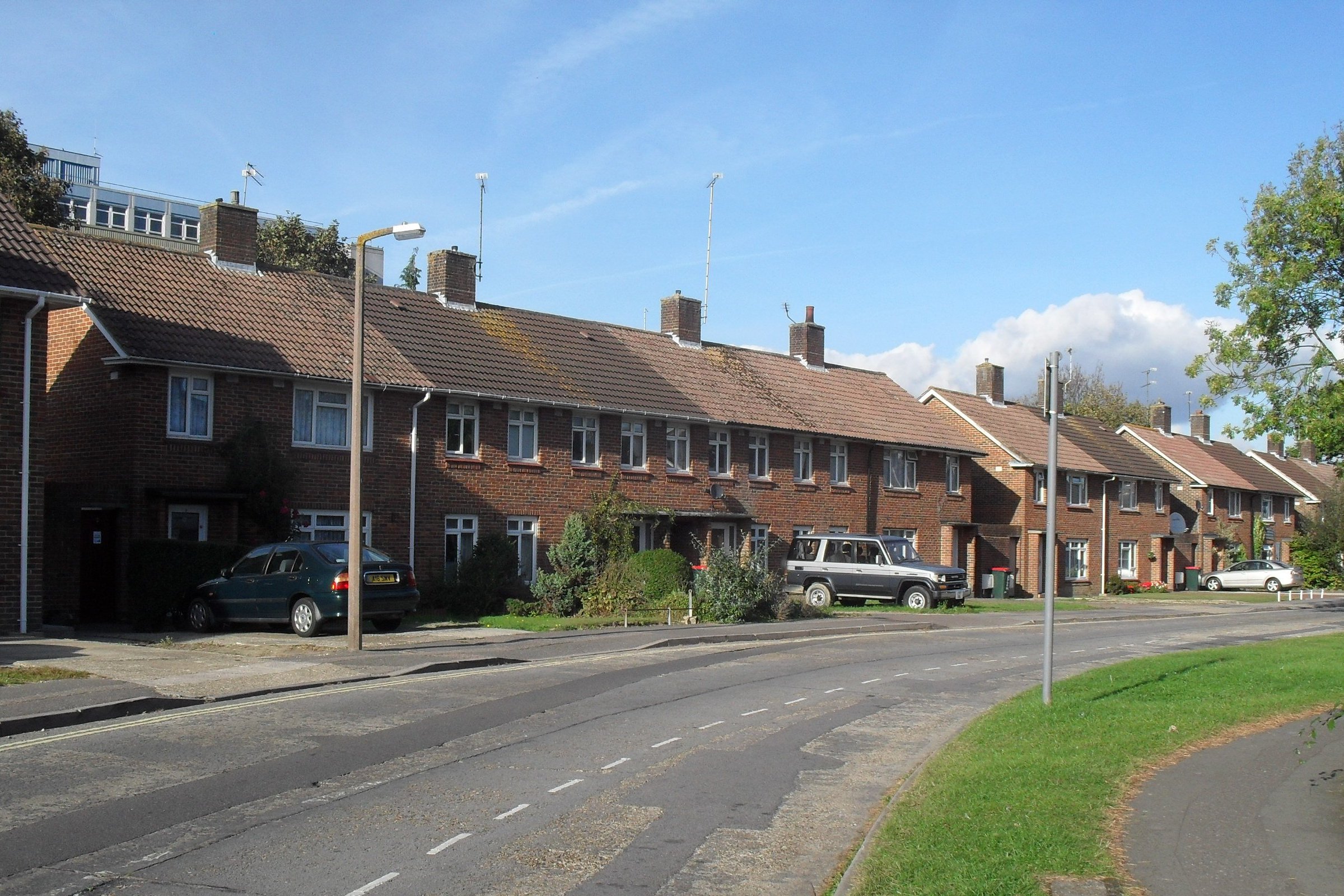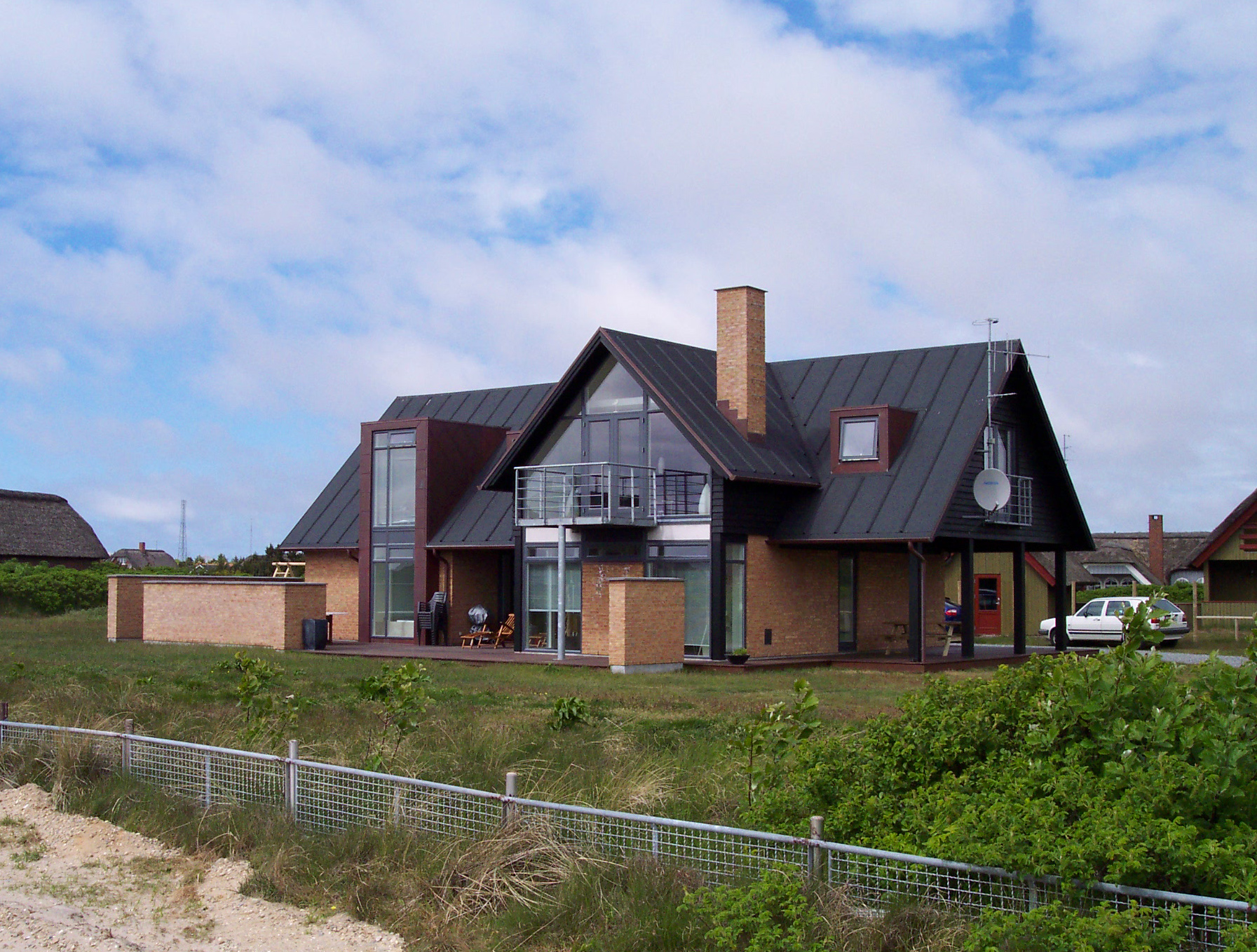|
West Green, West Sussex
West Green is one of the 14 residential neighbourhoods in Crawley, a town and borough in West Sussex, England. Crawley was planned and laid out as a New Town after the Second World War, based on the principle of self-contained neighbourhoods surrounding a town centre of civic and commercial buildings. West Green was the first neighbourhood to be developed, and is one of the smallest and closest to the town centre. Location within Crawley West Green is a roughly triangular area of , bounded by the Arun Valley railway line to the south, the A23 (Crawley Avenue) to the west and north, and the High Street to the east. The latter formed part of the main London to Brighton road until it was bypassed in the 1930s. Northgate and the town centre lie to the east, Southgate is to the south, Ifield is to the west and Langley Green shares a border to the north. When the New Town was planned, each neighbourhood was allocated a colour, which appears on street name signs together with the ... [...More Info...] [...Related Items...] OR: [Wikipedia] [Google] [Baidu] |
Crawley
Crawley () is a large town and borough in West Sussex, England. It is south of London, north of Brighton and Hove, and north-east of the county town of Chichester. Crawley covers an area of and had a population of 106,597 at the time of the 2011 Census. The area has been inhabited since the Stone Age, and was a centre of ironworking in Roman times. Crawley developed slowly as a market town from the 13th century, serving the surrounding villages in the Weald. Its location on the main road from London to Brighton brought passing trade, which encouraged the development of coaching inns. A rail link to London opened in 1841. Gatwick Airport, nowadays one of Britain's busiest international airports, opened on the edge of the town in the 1940s, encouraging commercial and industrial growth. After the Second World War, the British Government planned to move large numbers of people and jobs out of London and into new towns around South East England. The New Towns Act 1946 design ... [...More Info...] [...Related Items...] OR: [Wikipedia] [Google] [Baidu] |
Council House
A council house is a form of British public housing built by local authorities. A council estate is a building complex containing a number of council houses and other amenities like schools and shops. Construction took place mainly from 1919 after the Housing Act 1919 to the 1980s, with much less council housing built since then. There were local design variations, but they all adhered to local authority building standards. The Housing Acts of 1985 and 1988 facilitated the transfer of council housing to not-for-profit housing associations with access to private finance, and these new housing associations became the providers of most new public-sector housing. By 2003, 36.5% of the social rented housing stock was held by housing associations. History House design in the United Kingdom is defined by a series of Housing Acts, and public housing house design is defined by government directives and central governments' relationship with local authorities. From the first interventi ... [...More Info...] [...Related Items...] OR: [Wikipedia] [Google] [Baidu] |
Single-family Detached Home
A stand-alone house (also called a single-detached dwelling, detached residence or detached house) is a free-standing residential building. It is sometimes referred to as a single-family home, as opposed to a multi-family residential dwelling. Definitions The definition of this type of house may vary between legal jurisdictions or statistical agencies. The definition, however, generally includes two elements: * Single-family (home, house, or dwelling) means that the building is usually occupied by just one household or family, and consists of just one dwelling unit or suite. In some jurisdictions allowances are made for basement suites or mother-in-law suites without changing the description from "single family". It does exclude, however, any short-term accommodation (hotel, motels, inns), large-scale rental accommodation ( rooming or boarding houses, apartments), or condominia. * Detached (house, home, or dwelling) means that the building does not share wall with oth ... [...More Info...] [...Related Items...] OR: [Wikipedia] [Google] [Baidu] |
Allotment (gardening)
An allotment (British English), or in North America, a community garden, is a plot of land made available for individual, non-commercial gardening or growing food plants, so forming a kitchen garden away from the residence of the user. Such plots are formed by subdividing a piece of land into a few or up to several hundred parcels that are assigned to individuals or families. Such parcels are cultivated individually, contrary to other community garden types where the entire area is tended collectively by a group of people. In countries that do not use the term "allotment (garden)", a "community garden" may refer to individual small garden plots as well as to a single, large piece of land gardened collectively by a group of people. The term "victory garden" is also still sometimes used, especially when a community garden dates back to the First or Second World War. The individual size of a parcel typically suits the needs of a family, and often the plots include a shed for tools a ... [...More Info...] [...Related Items...] OR: [Wikipedia] [Google] [Baidu] |
Compulsory Purchase Order
A compulsory purchase order (CPO; , ) is a legal function in the United Kingdom and Ireland that allows certain bodies to obtain land or property without the consent of the owner. It may be enforced if a proposed development is considered one for public betterment; for example, when building motorways where a landowner does not want to sell. Similarly, if town councils wish to develop a town centre, they may issue compulsory purchase orders. CPOs can also be used to acquire historic buildings in order to preserve them from neglect. Compensation rights usually include the value of the property, costs of acquiring and moving to a new property, and sometimes additional payments. Costs of professional advice regarding compensation are usually reimbursed by the authority, so that people affected by a compulsory purchase order can seek advice from a solicitor and a surveyor and expect to be reimbursed. Ireland In Ireland, CPOs became quite common in the early 21st century due to the m ... [...More Info...] [...Related Items...] OR: [Wikipedia] [Google] [Baidu] |
Fiscal Year
A fiscal year (or financial year, or sometimes budget year) is used in government accounting, which varies between countries, and for budget purposes. It is also used for financial reporting by businesses and other organizations. Laws in many jurisdictions require company financial reports to be prepared and published on an annual basis but generally not the reporting period to align with the calendar year (1 January to 31 December). Taxation laws generally require accounting records to be maintained and taxes calculated on an annual basis, which usually corresponds to the fiscal year used for government purposes. The calculation of tax on an annual basis is especially relevant for direct taxes, such as income tax. Many annual government fees—such as council tax and license fees, are also levied on a fiscal year basis, but others are charged on an anniversary basis. Some companies, such as Cisco Systems, end their fiscal year on the same day of the week each year: the day ... [...More Info...] [...Related Items...] OR: [Wikipedia] [Google] [Baidu] |
Anthony Minoprio
Sir Charles Anthony Minoprio (1900–1988) was a British architect and town planner. Much of his early work was in partnership with Hugh Spencely (1900–1983), a friend since they attended Harrow School together. Later he worked more as a town planner, particularly the New Town of Crawley. Early life and education Minoprio went to Harrow School and the University of Oxford, then studied for five years at the University of Liverpool's School of Architecture, where he obtained a Bachelor of Architecture degree in 1925 and an MA three years later. His Beaux-Arts training informed his later work on designing "visually striking" town plans. His architectural training also came in Liverpool under Charles Herbert Reilly, "a believer in grand neoclassical designs of wide avenues". This influenced his views on the importance of good architecture being an integral part of the town planning process and an important feature in a town's civic pride. He worked for a few months at an archi ... [...More Info...] [...Related Items...] OR: [Wikipedia] [Google] [Baidu] |
Urban Planning
Urban planning, also known as town planning, city planning, regional planning, or rural planning, is a technical and political process that is focused on the development and design of land use and the built environment, including air, water, and the infrastructure passing into and out of urban areas, such as transportation, communications, and distribution networks and their accessibility. Traditionally, urban planning followed a top-down approach in master planning the physical layout of human settlements. The primary concern was the public welfare, which included considerations of efficiency, sanitation, protection and use of the environment, as well as effects of the master plans on the social and economic activities. Over time, urban planning has adopted a focus on the social and environmental bottom-lines that focus on planning as a tool to improve the health and well-being of people while maintaining sustainability standards. Sustainable development was added as one of th ... [...More Info...] [...Related Items...] OR: [Wikipedia] [Google] [Baidu] |
Thomas Bennett (architect)
Sir Thomas Penberthy Bennett KBE FRIBA (14 August 1887 – 29 January 1980) was an English architect, responsible for much of the development of the new towns of Crawley and Stevenage. Biography Early life Thomas Bennett was born in 1887 in Paddington, London. He trained as an architect at Regent Street Polytechnic while employed in the drawing office of the London and North Western Railway. He went on to study at the Royal Academy Schools. Career He joined the Office of Works (later Ministry of Works) in 1911. A career in both education and government followed, until setting up his own practice known as TP Bennett in 1921. In 1922, he became a Fellow of the Royal Institute of British Architects. In 1940, he became Director of Bricks at the Ministry of Works, where he was awarded the CBE in 1942, but returned to private practice immediately after the Second World War. He was knighted in 1946. His practice was responsible for many landmark buildings such as the Saville Thea ... [...More Info...] [...Related Items...] OR: [Wikipedia] [Google] [Baidu] |
Crawley Development Corporation
Crawley Development Corporation was set up in February 1947 by the Government of the United Kingdom to establish, administer and control the development of the New Town of Crawley in accordance with the New Towns Act 1946. The Corporation had the task of growing the ancient Sussex market town of Crawley from a population of 9,000 to 40,000 by the early 1960s, expanding its commercial and industrial base and developing a balanced, socially cohesive community. A master plan supplied by planning consultant Anthony Minoprio would guide the Corporation's work. The "energy and enthusiasm" of its chairman Thomas Bennett helped it meet many of its targets early, and it was formally dissolved in 1962. Its assets passed to the Commission for New Towns in that year; they are now owned privately or by the local authority, Crawley Borough Council. The Corporation was based at Broadfield House, a 19th-century villa in the south of the town. Professionals and specialists from many fields ... [...More Info...] [...Related Items...] OR: [Wikipedia] [Google] [Baidu] |
New Towns Act 1946
The New Towns Acts were a series of Acts of the Parliament of the United Kingdom to found new settlements or to expand substantially existing ones, to establish Development Corporations to deliver them, and to create a Commission to wind up the Corporations and take over their assets and liabilities. Of these, the more substantive acts were the New Towns Act 1946 and the Town Development Act 1952. "The New Towns Act 946was intended to pre-emptively direct urban growth and infrastructural development into new towns, thereby decentralising population and economic opportunity while inhibiting urban sprawl." New Towns were developed in three generations. *The first generation set up in the late 1940s concentrated predominantly on housing development on greenbelt sites with little provision for cars; eight were in a ring around London. *The second generation in the early 1960s included a wider mix of uses and used more innovative architecture. *The third generation towns were larger a ... [...More Info...] [...Related Items...] OR: [Wikipedia] [Google] [Baidu] |
Crawley Housing - Smalls Mead, West Green
Crawley () is a large town and borough in West Sussex, England. It is south of London, north of Brighton and Hove, and north-east of the county town of Chichester. Crawley covers an area of and had a population of 106,597 at the time of the 2011 Census. The area has been inhabited since the Stone Age, and was a centre of ironworking in Roman times. Crawley developed slowly as a market town from the 13th century, serving the surrounding villages in the Weald. Its location on the main road from London to Brighton brought passing trade, which encouraged the development of coaching inns. A rail link to London opened in 1841. Gatwick Airport, nowadays one of Britain's busiest international airports, opened on the edge of the town in the 1940s, encouraging commercial and industrial growth. After the Second World War, the British Government planned to move large numbers of people and jobs out of London and into new towns around South East England. The New Towns Act 1946 designa ... [...More Info...] [...Related Items...] OR: [Wikipedia] [Google] [Baidu] |






.jpg)
.jpg)